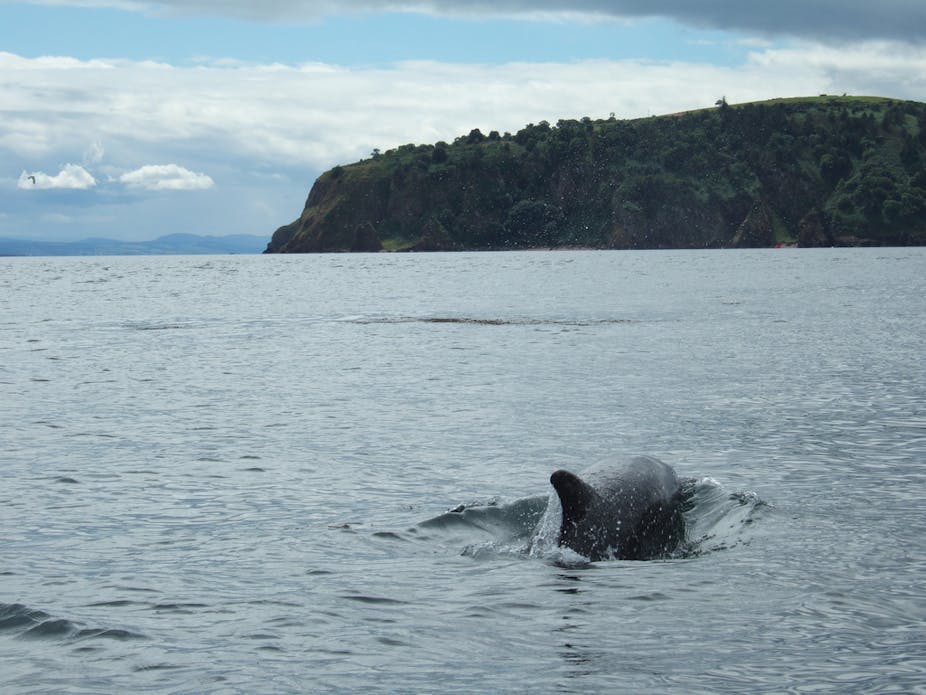Warming oceans are having an impact on the breeding patterns and habitat of marine life, effectively re-arranging the broader marine landscape as species adjust to a changing climate, according to a three-year international study published today in Nature Climate Change.
Scientific and public attention regarding the impacts of climate change has generally focused on how biodiversity and people are being affected on land. In the last Intergovernmental Panel on Climate Change (IPCC) report in 2007, less than 1% of the synthesis information on impacts of climate change on natural systems came from the ocean. Yet marine systems cover 71% of the Earth’s surface, and we depend on marine life for food, recreation and half the oxygen we breathe. A key unanswered question is whether marine life is buffered from climate change because of the much more gradual warming in our surface oceans – about a third as fast as on land.
An international team of scientists from Australia, USA, Canada, UK, Europe and South Africa has set out to answer this question. We conducted the first global analysis of climate change impacts on marine life assembling a large database of 1,735 biological changes from peer-reviewed studies. Just as the medical profession pools information on the symptoms of individual patients from surgeries and hospitals to reveal patterns of disease outbreaks, we pooled information from many studies to show a global fingerprint of the impact of recent climate change on marine life. Changes were documented from studies conducted in every ocean, with an average timespan of 40 years. This paper is the result of this 3-year project, funded by the US National Center for Ecological Analysis and Synthesis.
Although there is a perception among the general public that the impacts of climate change are an issue for the future, the pervasive and already observable changes in our oceans are stunning. Climate change has already left a coherent and significant fingerprint across all ecosystems (coastal to open ocean), latitudes (polar to tropical) and trophic levels (plankton to sharks). These fingerprints show that warming is causing marine species to shift where they live and alter the timing of nature’s calendar. In total, 81% of all changes were consistent with the expected impacts of climate change (Figure 1).

As temperatures warm, marine species are shifting their geographic distribution toward the poles. Most intriguingly, though, they are doing so much faster than their land-based counterparts. The leading edge or frontline of marine species distribution is moving toward the poles at an average of 72 kilometres per decade — considerably faster than species on land at an average of 6 kilometres per decade. Plankton and bony fish, many of which are commercially important, showed the largest shifts.
Warmer temperatures are also changing the timing of breeding, feeding, and migration events. For marine life, their spring events have advanced by more than four days, nearly twice the figure for land. The strength of response varied among species, but again, the research showed the greatest response — up to 11 days in advancement — was for plankton and larval bony fish.
Currents clearly play a role in the large distribution movements seen in the ocean, but a more subtle phenomenon is also at work. Temperature gradients are more gentle in the ocean than over much of the land. Consider the complex topography on land; many land plants and animals only need to move short distances up or down mountains and hill-sides to reach different temperature regimes. As the ocean surface is relatively flat, marine plants and animals must move greater distances to keep up with their preferred environments as oceans warm. Seasonal cycles are also dampened in the ocean, meaning that for a set amount of warming, marine species need to shift their timing much earlier than on land.
Although the study reported global impacts, there is strong evidence of change in British waters.
In the North Sea, cold-water fish species are moving deeper and northwards while warmer water fish and invertebrates are moving in through the English Channel. However, responses are idiosyncratic, with high variability in rates of response among species’ and populations.
Essentially, these findings indicate we are seeing widespread reorganisation of marine ecosystems, with probable significant repercussions for the services these ecosystems provide to humans. For example, small fish of southern origin are increasing in the North Sea but concurrent declines of large-bodied, cold-water commercial species are likely to result in social and economic impacts.
Movement of species is likely to have implications for conservation management. For example, off northern Scotland stranding records indicate cold-water dolphins are in decline while warmer-water common dolphins are increasing. Climate change may result in dolphins moving out of areas designated for their protection.

